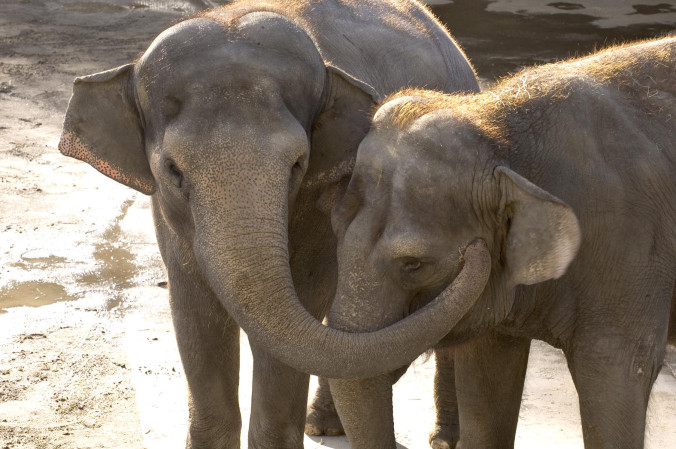Evaluating ovarian cycle activity through longitudinal progestagen monitoring is important for improving the breeding management of captive elephants and understanding the impact of life events (births, deaths, and transfers) on reproductive function. This study summarizes longitudinal serum progestagen data from eight Asian mainland elephants (Elephas maximus indicus) and one Bornean elephant (E. maximus borneensis) at the Oregon Zoo over a 20-year period. Our data show that estrous cycle characteristics were more varied than previously reported for this species, with an overall duration of 12 to 19 weeks, luteal phase duration of 4 to 15 weeks, and follicular phase duration of 2 to 12 weeks. In general, there was more cycle variability across than within individuals. In particular, the Borneo female exhibited consistently longer cycle lengths and higher progestagen concentrations compared to herdmates. Variability in duration of the follicular phase was greater than that of the luteal phase. In addition, there was a negative and significant relationship between luteal and follicular phase duration, suggesting a possible regulatory role of the follicular phase in maintaining a relatively consistent cycle duration within individuals. Cycle durations did not appear to change over time, and the first pubertal cycle was similar to subsequent cycles. Major life events (births, deaths, and changes in herd structure) had minimal effect on cycle dynamics in this group of elephants. Our next goal is to extend this database analysis to other facilities holding Asian elephants and evaluate hormonal relationships on an individual, herd, and population basis. Understanding the complexities of herd reproductive characteristics could facilitate the development of more institution-specific management strategies to maximize the health and reproduction of captive elephants.

